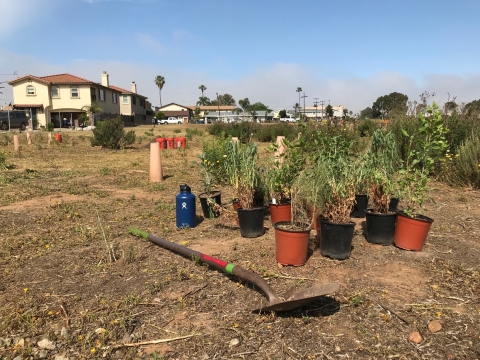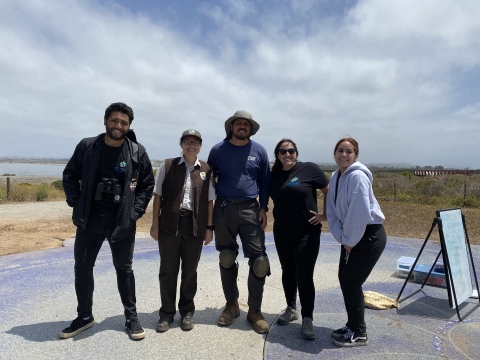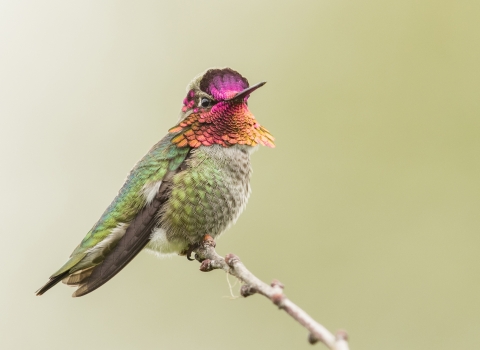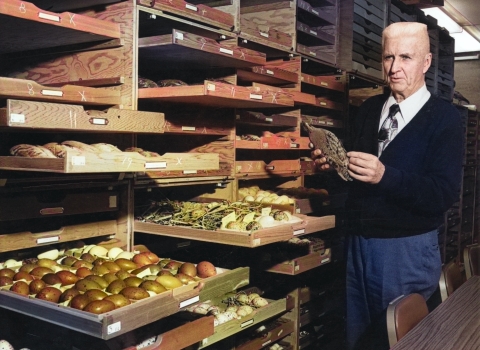In celebration of Latino Conservation Week, San Diego National Wildlife Refuge Complex would like to highlight the importance of water in our wildlife refuges and its impact on local communities. Agua es Vida, in Spanish, directly translates to water is life. Rightfully so, this essential natural resource is the start for all life and plays a significant role in everything from photosynthesis to geology to simply keeping us hydrated. Nearly all the work done by the U.S. Fish and Wildlife Service (USFWS) is influenced by hydrology or is tied back to water in some way. In a place where rain is sparse, every drop of water counts and, when there’s enough of them, it can create a force with the momentum to carve new landscapes over time.
In the same way that water can shape landforms, the USFWS has been laying the groundwork for increasing coastal access and fostering a caring relationship with our waterways and all the lifeforms it sustains. For the past 15 years, the USFWS has partnered with Ocean Connectors, a local non-profit, to enhance the ecological community along San Diego Bay National Wildlife Refuge (SDBNWR). This tremendous undertaking started back in 2007 and has made significant progress at the Habitat Heroes restoration site in Imperial Beach.
This partnership with Ocean Connectors supports the Latino community getting outdoors and participating in activities to protect natural resources. The aim is to connect youth with coastal wildlife and offer English-Spanish dialogue that helps promote environmental stewardship and an understanding of how coastal refuges and communities’ interconnect. Educational programs raise awareness of coastal degradation and address many of the threats San Diego Bay experiences, for example, pollution, development, climate change climate change
Climate change includes both global warming driven by human-induced emissions of greenhouse gases and the resulting large-scale shifts in weather patterns. Though there have been previous periods of climatic change, since the mid-20th century humans have had an unprecedented impact on Earth's climate system and caused change on a global scale.
Learn more about climate change , sea level rise, etc. Programs ultimately emphasize how individual and collective actions are essential for managing water resources.
The USFWS also recognizes there has been a long and complicated relationship between underserved communities and access to the coast. Historically, there are many challenges coastal communities have faced in San Diego which come in the form of transportation barriers, private property owners, and restricted hours, to name a few. Despite these adversities, the USFWS has strived to encourage visitors along San Diego Bay as well as the rest of our refuges. This partnership also supports recreational user groups by providing secure access so everyone can enjoy our valuable coastal resources, all the while providing wildlife with the space and respect it deserves.
In a world surrounded by manicured lawns and concrete, SDBNWR offers an escape and welcomes all to come visit and become inspired by its glistening views and wildlife. The endless possibilities for encounters with nature all along our bay come in many forms. An osprey diving into water. A rabbit dashing across the bike path. A swallowtail butterfly gracing our afternoon. Cliff swallows soaring high above in large flocks. Furthermore, the native flora local students have planted has enhanced the habitat and resources for all these life forms.
Although this season’s restoration work with Ocean Connectors has ended, land management at this location is an ongoing responsibility for USFWS and we’re committed to maximize recreational opportunities in our coastal zones while protecting native habitat for plants and animals. Preservation and recreation can be difficult to balance, but neither is possible without the support of the public. Our goal is that each student revisits the sites they’ve helped enhance and make informed decisions about the environment. We’re hopeful for next year’s restoration program and look forward to engaging more youth from local communities.
We may not think a single drop of water can have a measurable impact, but if we work together, we can proactively make a difference in our communities and carve new paths in conservation. Join us as we celebrate waterways and continue expanding our efforts in protecting the environment with the support of partners and local students. Throughout our celebration of Latino Conservation Week, we invite you to learn more about the progress we’ve made across the Service and wildlife refuges. Stay tuned!
Here are some helpful tips on how you can help maintain healthy waterways:
1. Reduce, reuse, recycle.
2. Use less toxic cleaning products.
3. Choose environmentally sustainable seafood.
4. Recycle your fishing line and properly dispose of nets and hooks.
4. Take public transit, bike, or walk instead of driving.
5. Volunteer and educate.
6. Share this post.





